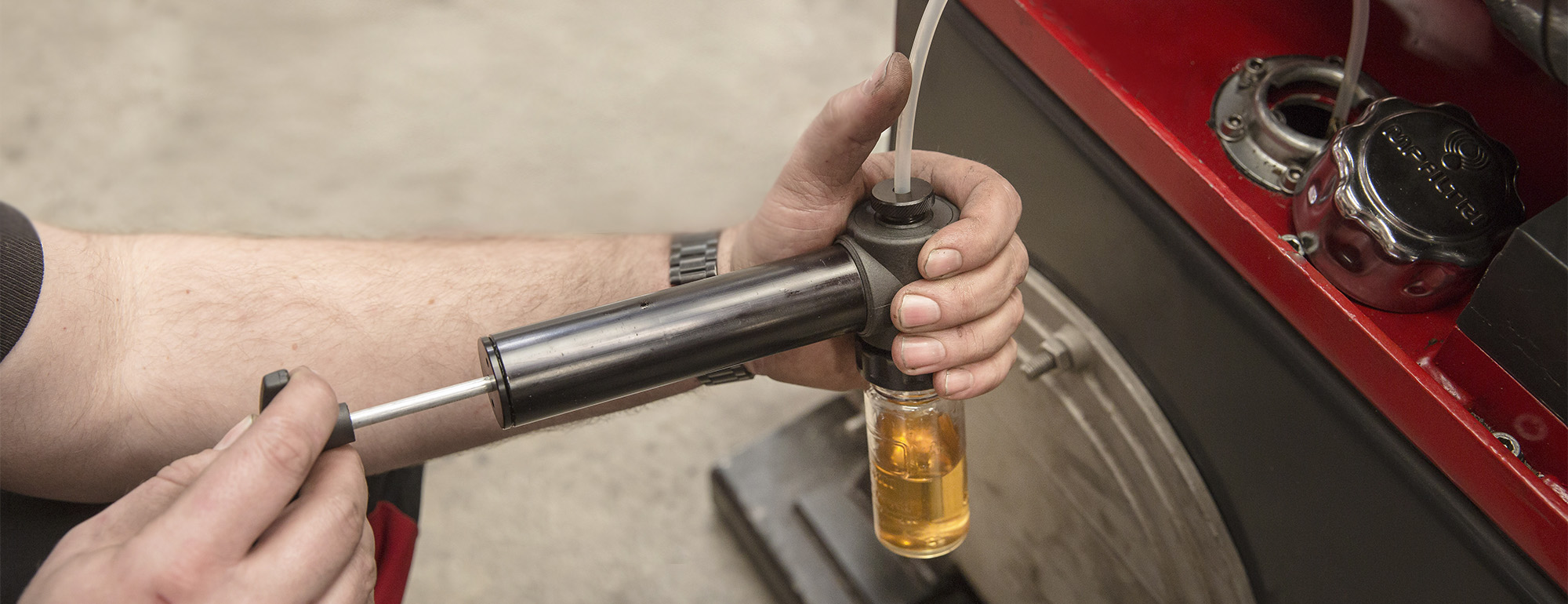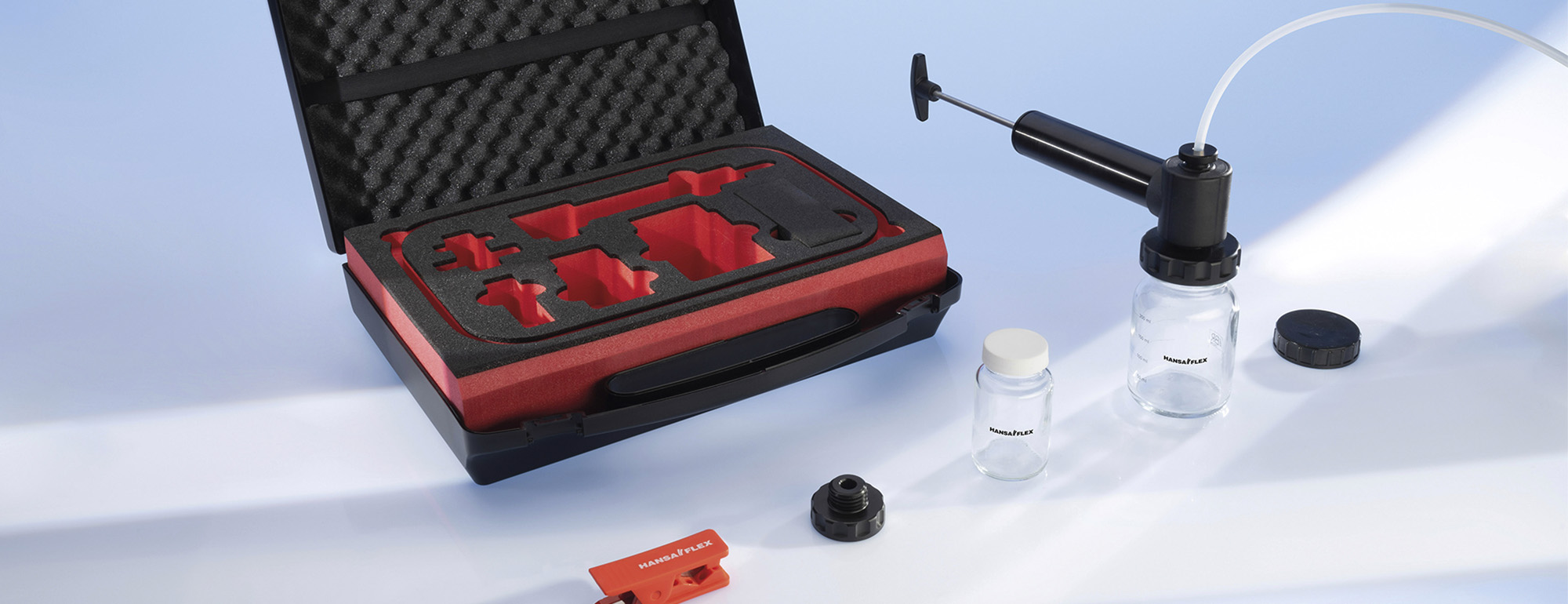Feasibility analysis
This question can be answered as a first step by the following tests:
- Does the oil temperature in the tank often climb higher than 60 °C?
- Are some valves in the hydraulic system significantly hotter than others?
- Are negative/pressure loads often moved (load direction acts in the direction of movement)?
- Are flow control valves (throttles, flow regulating valves, proportional valves) installed?
- Are several consuming units supplied simultaneously by one pump?
If the answer to one or more of these questions is “yes”, a system analysis may be worthwhile. Often an over-dimensioning of the volume flow or pressure - in the worst case both – can be determined. In the case of the HANSA‑FLEX pressure impulse test benches, the first two points in particular apply. After this simple evaluation of the savings potential, the hydraulic system is analysed in detail to optimise energy efficiency.
Installation check
(I) Extending the pressure intensifier leads to a pressure build-up (high pressure = test pressure = red curve) in the hose lines to be tested.
(II) The test pressure and therefore the position of the pressure intensifier is maintained.
(III) If the test pressure is to be reduced again, the pressure intensifier must be retracted.
(IV) At the end of a pressure impulse cycle, the hose lines to be tested are flushed with a pressure of 0-10 bar.
Loss determination
Optimisation test
-

Robert Becker
Test Engineer and Fluid Technology Trainer at IHA




